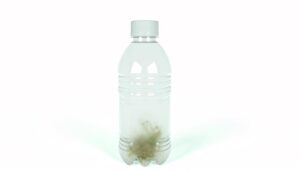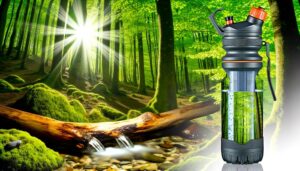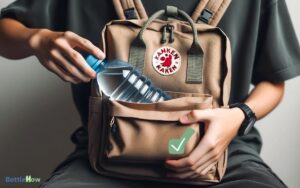Baking Soda to Clean Water Bottle: A Guide
You can effectively clean your water bottle using baking soda due to its mild abrasive properties, alkaline nature, and odor-neutralizing capabilities. Mix one tablespoon of baking soda with warm water, allow it to sit in the bottle for a few minutes, then scrub with a bottle brush.
Pay close attention to the neck and bottom, as these areas often harbor residues. Rinse thoroughly to remove all baking soda residue and let the bottle air dry completely.
This method not only removes stains and odors but also reduces microbial contamination, making your bottle safe for daily use. There’s more to discover about maintaining a clean bottle.
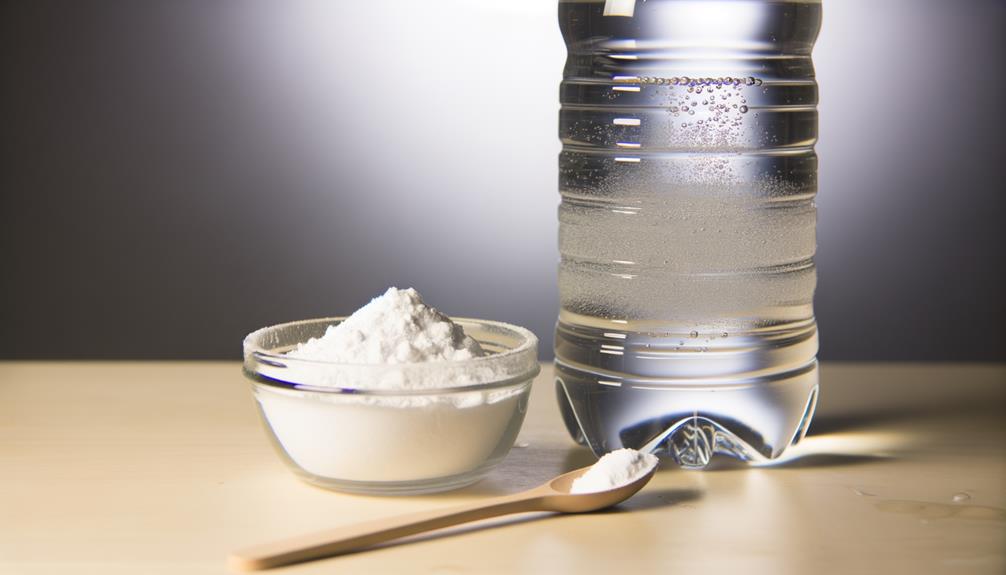
Key Takeaways
- Baking soda’s mild abrasive properties help remove residue and stains without scratching the bottle.
- Its alkaline nature effectively breaks down acidic compounds causing odors.
- The non-toxic and environmentally friendly nature of baking soda makes it a safe cleaning agent.
- Mixing one tablespoon of baking soda with one cup of warm water creates an effective cleaning solution.
Why Baking Soda Works
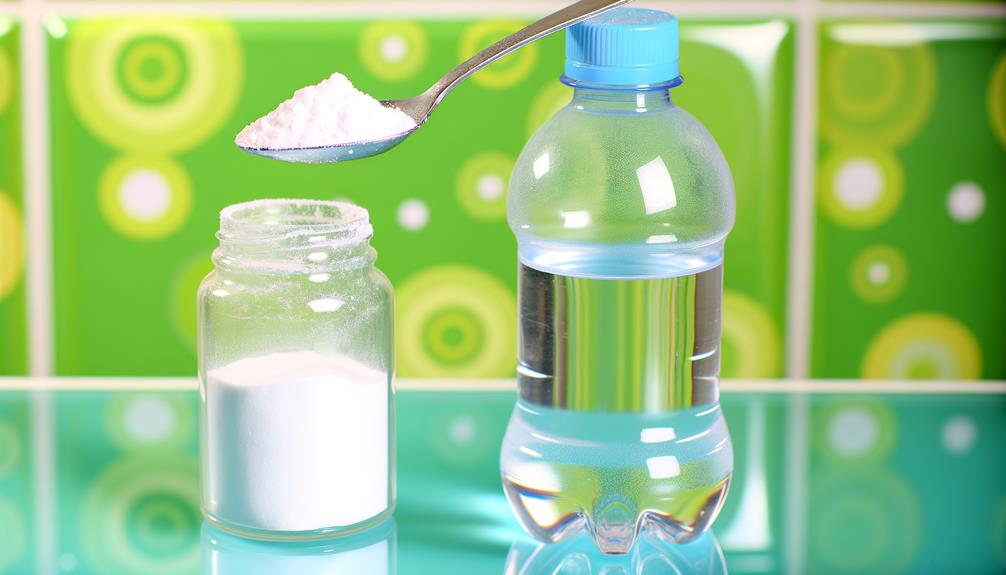
Baking soda works effectively to clean water bottles because of its mild abrasive properties and natural ability to neutralize odors.
When you scrub with baking soda, its fine particles create friction that can remove residue and stains without scratching the bottle’s surface. Additionally, baking soda’s alkaline nature helps break down acidic compounds, which often cause lingering smells.
Research indicates that it neutralizes odors by chemically reacting with acidic and basic odor molecules, rendering them odorless.
Furthermore, baking soda is non-toxic and environmentally friendly, making it a safer option for cleaning items that come in contact with drinking water.
You can rely on its proven efficacy to maintain a clean, fresh-smelling water bottle, reducing the need for harsh chemicals.
Materials You’ll Need
To effectively clean your water bottle, you’ll need a measured amount of baking soda and appropriate cleaning tools.
Typically, one to two tablespoons of baking soda are sufficient for most bottles.
Additionally, you’ll require a bottle brush or sponge to guarantee thorough coverage and scrubbing.
Baking Soda Amount
You’ll need one teaspoon of baking soda to effectively clean your water bottle. This amount is based on the ideal concentration needed to create a mildly alkaline solution, which can neutralize acids and dissolve organic residues.
Research indicates that baking soda’s abrasive properties help in scrubbing away stubborn stains and odors. Using more than a teaspoon doesn’t enhance cleaning efficiency considerably and may result in excessive residue, which can be difficult to rinse out.
Conversely, using less than a teaspoon mightn’t provide enough cleaning power to sanitize the bottle thoroughly. As a result, one teaspoon is the balanced quantity that guarantees both efficiency and ease of cleaning, making your water bottle hygienic and fresh.
Cleaning Tools Needed
For a thorough cleaning, gather a few essential tools that will complement the baking soda‘s effectiveness.
You’ll need a bottle brush to reach into the narrow spaces of your water bottle. A small funnel guarantees you pour the baking soda without spilling.
Hot water, vital for dissolving residues, enhances the cleaning action. A microfiber cloth is useful for wiping the exterior and making sure no spots are left behind.
If your bottle has a straw or mouthpiece, a smaller brush designed for these components will be indispensable.
Finally, a clean, dry towel helps in drying the bottle completely to prevent any bacterial growth.
Preparing the Cleaning Solution
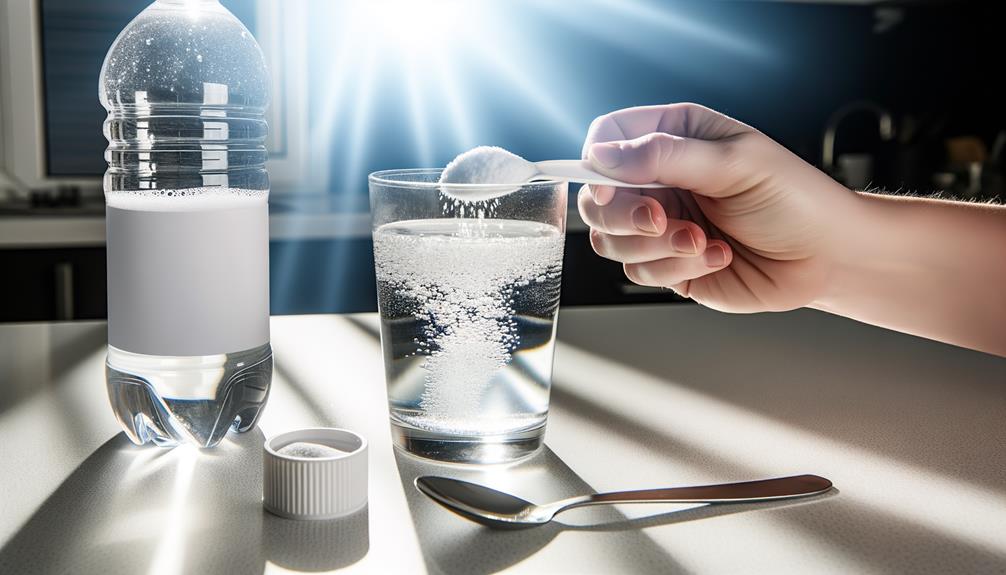
Start by mixing one tablespoon of baking soda with one cup of warm water to create an effective cleaning solution. This mixture leverages baking soda’s alkaline properties to neutralize odors and break down residues. Warm water enhances the solubility of baking soda, ensuring even distribution.
| Ingredient | Measurement |
|---|---|
| Baking Soda | 1 Tablespoon |
| Warm Water | 1 Cup |
Using this solution offers several benefits:
- Antimicrobial Properties: Baking soda can inhibit bacterial growth.
- Non-Toxic: Safe for both you and the environment.
- Cost-Effective: Affordable and readily available.
Ensure the mixture is well-stirred, allowing the baking soda to dissolve completely. This preparation phase is essential to achieving ideal cleaning results for your water bottle.
Scrubbing the Bottle
With your cleaning solution prepared, focus on scrubbing the bottle to remove any remaining residues and stains. Use a bottle brush to reach all interior surfaces. Pay extra attention to the bottom and narrow neck, where buildup often occurs. Rinse thoroughly with warm water to ensure no soap or cleaning solution remains. Following these steps on how to clean water bottle interiors will help maintain hygiene and prevent odors.
Studies show that mechanical scrubbing is effective in dislodging biofilm and other contaminants. Pay special attention to the bottle’s neck and bottom, where residues often accumulate.
If the bottle has a narrow neck, a brush with flexible bristles will be beneficial. For persistent stains, let the solution sit for a few minutes before scrubbing.
Evidence suggests that allowing the cleaning solution to work for a short period enhances its effectiveness.
Don’t forget to scrub the bottle cap and any threads, as these areas are prone to buildup. This thorough approach guarantees peak cleanliness.
Rinsing and Drying
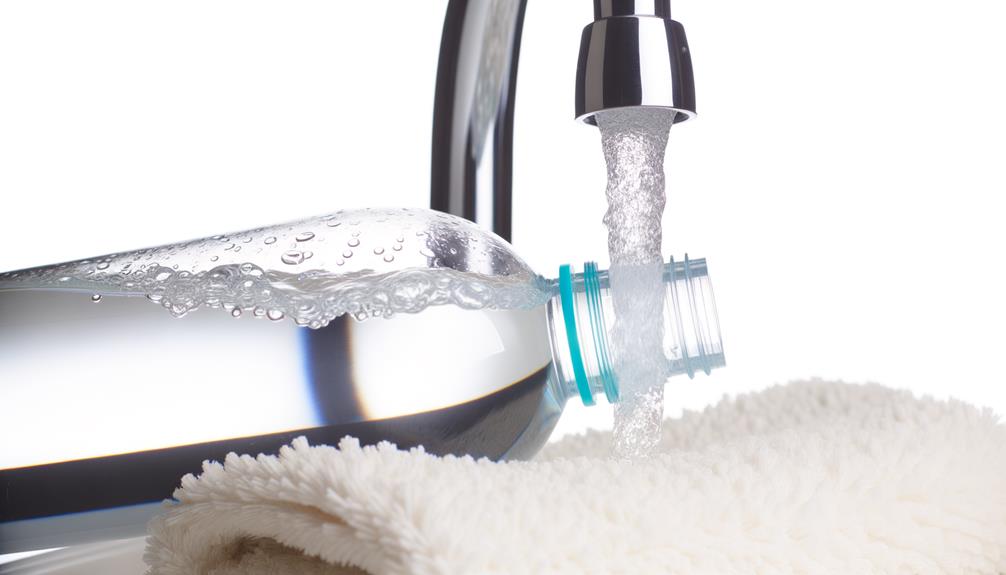
After scrubbing, you’ll need to rinse your bottle thoroughly to guarantee no baking soda residue remains.
Use effective drying methods, such as air drying upside down, to prevent moisture buildup.
This approach helps prevent any residue buildup, confirming your bottle stays clean and safe to use.
Thorough Rinse Technique
Rinsing your water bottle thoroughly guarantees that all baking soda residue is removed, preventing any lingering taste or potential irritation.
Begin by filling the bottle with warm water. Shake it vigorously to make sure that water reaches all surfaces inside. Next, pour out the water and repeat this process at least three times. Research indicates that multiple rinses are effective at eliminating residues.
Additionally, pay attention to the bottle’s cap and any crevices, as residues can accumulate there. Using a bottle brush can enhance the cleaning process by reaching difficult areas.
Effective Drying Methods
Making sure your water bottle is completely dry after rinsing is vital for preventing the growth of mold and bacteria. You can achieve this by first shaking out excess water.
Then, place the bottle upside down on a clean, dry towel. This position allows gravity to assist in draining any remaining moisture.
Air circulation is also important, so leave the bottle uncapped and in a well-ventilated area. Using a fan or placing the bottle near a window can expedite the drying process.
Evidence suggests that even minor moisture can foster microbial growth, so thorough drying is imperative. Avoid using heat sources like dishwashers or ovens, as they can damage certain materials.
Preventing Residue Buildup
Eliminating residue buildup in your water bottle involves precise rinsing and drying techniques to maintain cleanliness and secure safe usage.
After washing with baking soda, rinse thoroughly with warm water to remove any remaining particles. Evidence suggests that inadequate rinsing can leave behind residues that foster bacterial growth.
Drying is equally essential; moisture can create a breeding ground for mold. Use a clean towel to wipe the bottle inside out or let it air dry upside down to guarantee all water drains out. Studies indicate that air drying is effective in preventing microbial contamination.
Tips for Deep Cleaning
To achieve a thorough clean, start by combining a tablespoon of baking soda with warm water inside the bottle.
Secure the lid and shake vigorously to guarantee the solution reaches all surfaces.
Baking soda’s mild abrasiveness helps dislodge stubborn residues and neutralizes odors.
Let the mixture sit for at least 15 minutes to enhance its effectiveness.
For particularly tough stains, use a bottle brush to scrub the interior, focusing on hard-to-reach areas.
Rinse thoroughly with clean water to remove any remaining baking soda.
Repeat the process if necessary.
This method leverages baking soda’s alkaline nature to break down organic material, guaranteeing your water bottle remains hygienic and safe for use.
Maintaining a Clean Bottle
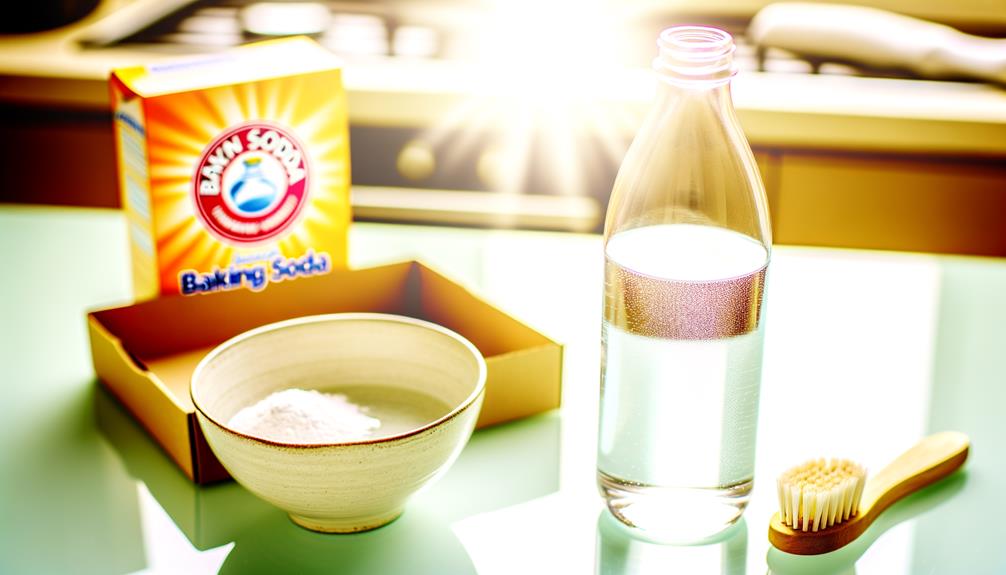
Regularly rinsing your water bottle with hot, soapy water greatly reduces the buildup of bacteria and mold.
Studies show that bacteria thrive in moist environments, making your bottle a potential hotspot. By using hot water, you’re effectively killing more germs compared to cold water.
Soap acts as a surfactant, breaking down and removing grime and biofilm. It’s important to disassemble any removable parts, such as lids and straws, to guarantee thorough cleaning.
Additionally, allow the bottle to dry completely before reassembling to prevent moisture retention. For long-term hygiene, consider using a bottle brush to reach all corners.
Regular maintenance not only extends your bottle’s life but also protects your health by minimizing microbial contamination.
Conclusion
Just as a knight’s armor must be maintained to remain effective, your water bottle requires regular cleaning to serve you well.
By using baking soda, a natural and powerful cleanser, you guarantee it stays in peak condition.
The steps are simple, from mixing the solution to thorough scrubbing and rinsing.
This routine not only extends the life of your bottle but also safeguards your health—an investment in both your gear and well-being.

